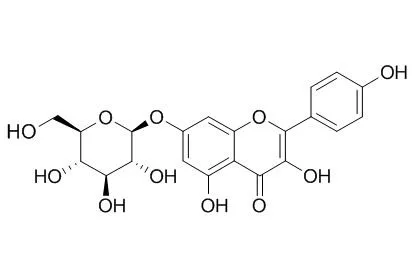| Abstract
Background: The flowers of Malus pumila Mill (Rosaceae) is rich in resources, but lack of medicinal value research. Chemical constituents of the same family M. pumila have coagulatory activity. Considering the coagulatory activity could be beneficial for various cardiovascular diseases, the aim of this study is to evaluate coagulatory active constituents of M. pumila flowers.
Methods: Chemical constituents of M. pumila flowers were isolated by various column chromatographies, and their coagulatory activity were evaluated by activated partial thromboplastin time (APTT), prothrombin time (PT), thrombin time (TT) and fibrinogen (FIB) in vitro.
Results: Nine compounds were isolated from M. pumila flowers, and identified as kaempferol-3-O-β-D-glucopyranoside (1), kaempferol-7-O-β-D-glucopyranoside (2), kaempferol-3-O-α-L-arabinofuranoside (3), phloridzin (4), kaempferol (5), phloretin (6), β-sitosterol (7), lupeol (8) and pyracanthoside (9). Compounds 1-9 were isolated from the flowers for the first time, compounds 1, 2 and 9 were isolated from the genus for the first time. Compound 2 could significantly shorten APTT, TT and PT, but significantly decrease the content of FIB. Compound 3 could shorten PT. Compound 4 could significantly shorten TT and PT, but significantly decrease the content of FIB. Compound 5 shortened APTT. Compound 6 and 7 could significantly shorten APTT and PT. Compound 9 was able to prolong TT and decrease the content of FIB, but shorten PT.
Conclusions: Compounds 2-7 possessed significant procoagulant activity in vitro, compound 9 had anticoagulant activity in vitro, which showed coagulation potential of compounds from M. pumila flowers, as a new source of bioactive molecules for therapeutic purposes.
Keywords: Chemical constituents; Coagulatory activity; Malus pumila Mill. |






 Cell. 2018 Jan 11;172(1-2):249-261.e12. doi: 10.1016/j.cell.2017.12.019.IF=36.216(2019)
Cell. 2018 Jan 11;172(1-2):249-261.e12. doi: 10.1016/j.cell.2017.12.019.IF=36.216(2019) Cell Metab. 2020 Mar 3;31(3):534-548.e5. doi: 10.1016/j.cmet.2020.01.002.IF=22.415(2019)
Cell Metab. 2020 Mar 3;31(3):534-548.e5. doi: 10.1016/j.cmet.2020.01.002.IF=22.415(2019) Mol Cell. 2017 Nov 16;68(4):673-685.e6. doi: 10.1016/j.molcel.2017.10.022.IF=14.548(2019)
Mol Cell. 2017 Nov 16;68(4):673-685.e6. doi: 10.1016/j.molcel.2017.10.022.IF=14.548(2019)